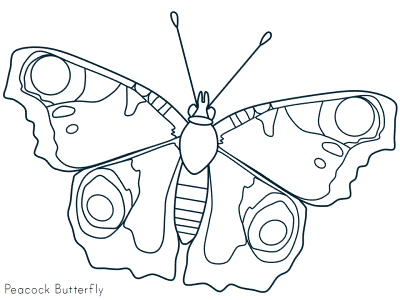Leanne's Printable Coloring Pages for Kids
Species of Butterfly Coloring Pages
Coloring pages featuring a variety of species of butterfly.
Blue Morpho: Dazzling with its brilliant blue wings that seem to shimmer and change colors as it flies, the Blue Morpho catches the light with every flap. Its undersides are a more camouflaged brown, dotted with eyespots to ward off predators, offering a striking contrast.
Fun Fact: The blue on the Blue Morpho’s wings isn’t a pigment but rather an effect of the way light reflects off microscopic scales on its wings, creating a brilliant blue that isn’t actually there!
The Giant Silk Moth, belonging to the family Saturniidae, represents some of the largest and most visually striking moths. These moths are known for their vibrant patterns and large, often eye-like spots on their wings, which serve as defense mechanisms against predators. Primarily nocturnal, they are found in diverse habitats ranging from temperate forests to tropical environments. While the adult moths typically do not eat, relying on the energy stored during their larval stage, their caterpillars are known for their voracious appetite for leaves.
Monarch Butterfly: Famous for its deep orange wings edged with black and white spots, the Monarch Butterfly is a vibrant symbol of endurance and migration. Its bold colors make it a standout in any garden or field.
Fun Fact: Monarch butterflies can travel between 50-100 miles a day during their migration, which totals around 3,000 miles, one of the longest migrations of any insect species!
Peacock Butterfly: Named for its eye-like patterns on a rich, russet background, the Peacock Butterfly's wings boast circles that mimic the exotic beauty of a peacock's tail. Splashes of yellow, orange, and black make it a joy to color.
Fun Fact: When threatened, the Peacock Butterfly can make a hissing sound by rubbing its wings together, which when combined with its eyespots, can scare away potential predators.
The silkworm moth, scientifically known as Bombyx mori, plays a crucial role in the production of silk. It is not particularly remarkable in appearance or size, but its value comes from the larvae or caterpillars, which spin silk cocoons from a protein in their saliva. These moths are entirely domesticated and have been bred selectively for their silk-producing capabilities. Unlike their wild ancestors, the domesticated silkworm moth cannot fly or live independently outside of human care, as they rely entirely on humans for reproduction and feeding. The life cycle of the silkworm moth is fascinating: from egg to larva, pupa, and finally to the moth, each stage plays a specific role in the centuries-old craft of sericulture (silk farming). These moths have been instrumental in textile industries, particularly in cultures where silk is a prized fabric for its beauty and durability.
Swallowtail: The Swallowtail Butterfly is known for its dramatic tail extensions and a pattern that mixes yellow, black, blue, and red spots. Its large wings are a canvas of bold, intersecting colors and shapes, perfect for detailed coloring.
Fun Fact: Swallowtail butterflies have caterpillars that mimic bird droppings as a defense strategy to avoid predation, making them less appealing to birds and other predators.
Ulysses Butterfly: This butterfly sports an electric blue that pops against the rainforest greenery it often calls home. The Ulysses Butterfly's wings have a sleek black border that enhances the intense blue, making it look like a piece of the sky floating through the air.
Fun Fact: The Ulysses butterfly is particularly elusive and hard to catch because it tends to fly high in the canopy of rainforests, often above the reach of would-be predators and butterfly collectors.






